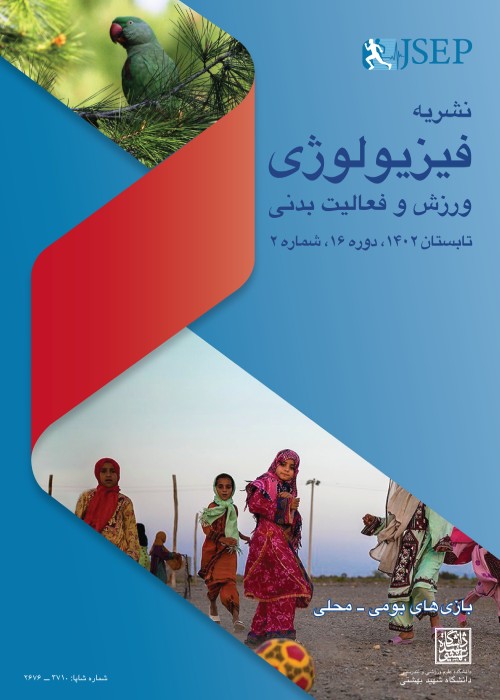Comparison of the effects of two different methods of concurrent training (continuous and interval) on body composition, aerobic power and muscle endurance in non-athlete male students
The purpose of this study was to compare the effect of two different methods of concurrent training (continuous and distinct) on body composition, aerobic power and muscle endurance in non athlete male students.
For this reason, 42 non-athlete students (age, 22.02±1.91 yrs; height, 175.83±5.88 cm; weight, 69.01±8.27 kg; BF, 13.71±3.33%) volunteered to participate in this study. Subjects were randomly assigned to 3 groups: Interval Resistance-Endurance (IRE) (n=14), Continuous Resistance-Endurance (CRE) (n 14), and Control (C) (n=14). Subjects performed 2 sessions per week for 12 weeks. Strength training includes Bench press, Lat pull down and cable triceps for upper body; squat, leg press and calf raise for lower body muscles that performed with 2-3 min rest interval between sets and exercises, and total time in each session was about 30-45 min. These exercises start with 2 sets, 10 repetitions with 60% 1RM in begining of program and reached to 3 sets, 4 repetitions & 90% 1RM in the last week. Aerobic training involved 20 min interval running using long and short distance by 70% maximal heart rate in start and raised to 45 min running by 95% HRmax in last week. IRE group performed aerobic training in one session and resistance training in other session in each week. In contrast, CRE group performed both aerobic and resistance training in each session together. Control group performed no regular exercise during this period. For data analysis, paired t test, ANOVA and tukey post hoc tests were used.
The findings showed BF% reduced significantly in both experimental groups compare to C group (P<0.05). Pullup and sit-up records of IRE and CRE groups in post-test was higher than pre-test, but this improvement was significantly smaller in IRE group in sit-up test (P<0.05). VO2max increased significantly after training in both experimental groups than control but in IRE group it improved significantly higher than CRE group 10.88 vs. 9.07 ml·kg−1·min−1; P<0.05).
In general, it can be suggested that for improving aerobic power, the aerobic training must performed alone not in concurrent form. But, concurrent training may be more useful for body composition and muscular endurance than resistance or endurance training alone.
- حق عضویت دریافتی صرف حمایت از نشریات عضو و نگهداری، تکمیل و توسعه مگیران میشود.
- پرداخت حق اشتراک و دانلود مقالات اجازه بازنشر آن در سایر رسانههای چاپی و دیجیتال را به کاربر نمیدهد.


